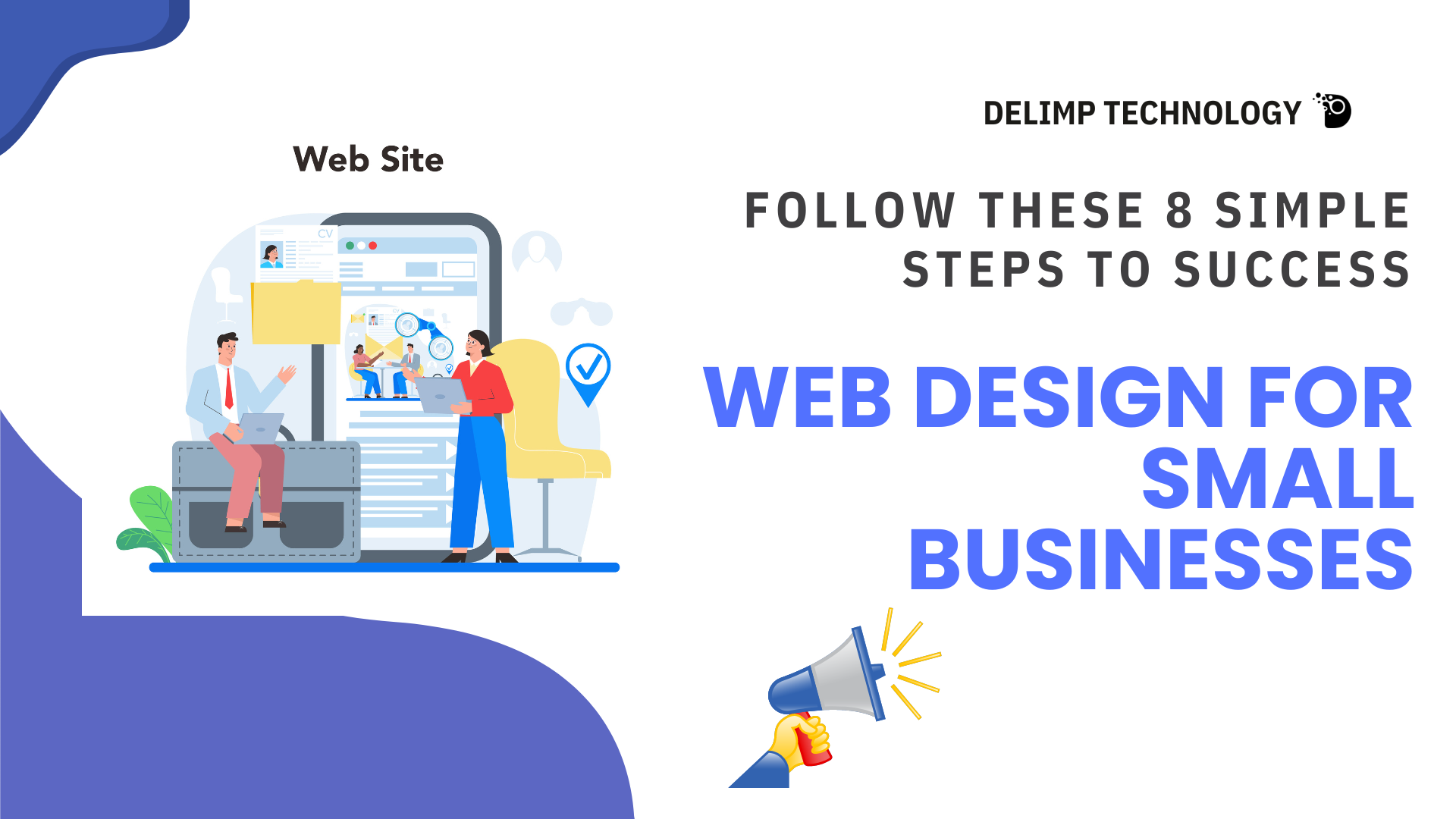The modern world cannot exist without the web, and your business cannot exist without its online counterpart. For small businesses, your website is the starting point of contact between the customers and your business. Whether you’re a sole trader or a small business owner looking to create a website for your company, the following guidelines will guide you through the process and help you achieve your goals. Now, let’s take a look at how you can create an excellent small business website design in eight steps.
Define Your Purpose and Audience
When rating and designing your website, it is vital to decide what goals you are willing to accomplish. Are you selling a product, marketing a service, or just giving out data or facts? Then, consider who your audience is—defining the target audience will inform even how the website looks and the language used on it. Small business website design should involve a consideration of your specific objectives as well as the goals of your target audience.
Choose a Simple, User-Friendly Platform
Fortunately, many websites offer tools to make it easy for those with little to no experience to build a web page. Some of the most popular website builders currently include WordPress, Wix, and Squarespace, which provide users with templates and ease of use. According to analytics, more than 43% of websites are developed using WordPress, which can be valuable for small companies.
Pick the Right Domain Name
It is your address on the internet, and believe me, it needs to be easy to remember and to write. Ideally, use 2 to 5 words that succinctly define your brand or services and are easy to remember. Studies reveal that search engine rank is in places influenced by the domain names’ lengths and relevance—the shorter and more relevant the domain name, the better for a small business website design.
Focus on Mobile Responsiveness
Mobile web traffic share in the year 2024 is that mobile devices contribute more than 58 percent of the total web traffic. This is a key point because users should be able to access your website and navigate through it irrespective of the device they are using. This implies that a responsive design will have the ability to adapt to any screen capacity and thus enable the users to have the best UX. Failure in mobile design could lead to missing out on potential consumers.
Create Clear and Engaging Content
Web audiences tend to be there to seek information; therefore, your content should be clear, interesting, and packed with information. There should not be lengthy blocks of text on any small business website design; it’s better to use bullet points, brief paragraphs, and strong headers to divide the content. Do remember to incorporate keywords in the passage, such as “small business website design,” for SEO purposes.
Optimize for Speed
One thing that is known to discourage a user most is a slow-running website. According to statistics, a website’s loading time below three seconds is optimal—if the page takes more than three seconds to load, 53% of users will leave it. Another importance of website speed is to make sure that the visitors of any site spend as much time as possible on the site. This general advice will help you increase your site speed: reduce image file sizes, limit the number of plugins you use, and select a good hosting service.
Include Calls-to-Action (CTAs)
Qualified CTAs are critical to conversions on your site. Do you want users to subscribe to a newsletter, buy something, or contact you? Then your CTAs should be obvious, persuasive, and conspicuous. Avoid complex sentences and text and use call-to-action language such as Get Started, Buy Now, or Contact Us Today.
Integrate Social Media Links
Well, dear readers, let me outline that social media is indeed a helpful tool for small businesses. This is where you get to link your social media page with your website to reach your clients at once. It is possible to add icons for Instagram, Facebook, Twitter, or LinkedIn in the footer or header of your website. This will assist in making you have a better web presence and reach out to your target market in several aspects.
Turn your small business into a digital powerhouse with our affordable and effective eCommerce web design services for small businesses.
Conclusion
As you can see, developing a small business website design does not have to be a complicated process. Here are 10 easy steps to help you design a website that not only appears great to the eye but is also easy to navigate and runs well. Bear in mind that customers’ first experience with your brand is normally through your website; ensure it counts! The website should reflect this by updating its features to the latest possible technology. Don’t let your website design become outdated; integrate new improvements and timely adapt to the modern web trends.
Frequently Asked Questions (FAQs)
Q1. Why is having a website important for small businesses?
Ans. A website is essential for small businesses as it establishes an online presence, builds brand credibility, and helps attract potential customers. In today’s digital world, a well-designed site serves as a powerful marketing tool, driving sales and increasing visibility.
Q2. What platform is best for small business website design?
Ans. Popular platforms like WordPress, Wix, and Squarespace are user-friendly and cost-effective for small businesses. WordPress is highly customizable, while Wix and Squarespace offer drag-and-drop simplicity, making them ideal for beginners.
Q3. How can I make my website mobile-friendly?
Ans. Choose a responsive web design that adjusts automatically to fit different screen sizes. Most website builders offer mobile-responsive templates, ensuring a seamless experience for users on smartphones and tablets.
Q4. What type of content should I include on my small business website?
Ans. Include clear and concise content that highlights your services or products, a compelling “About Us” section, and a contact page. Don’t forget to optimize for SEO by using relevant keywords and providing value through engaging blog posts or FAQs.
Q5. How do I ensure my website loads quickly?
Ans. To improve website speed, compress images, use minimal plugins, and choose a reliable hosting provider. Fast-loading websites reduce bounce rates and provide a better user experience, which is crucial for small business websites.






